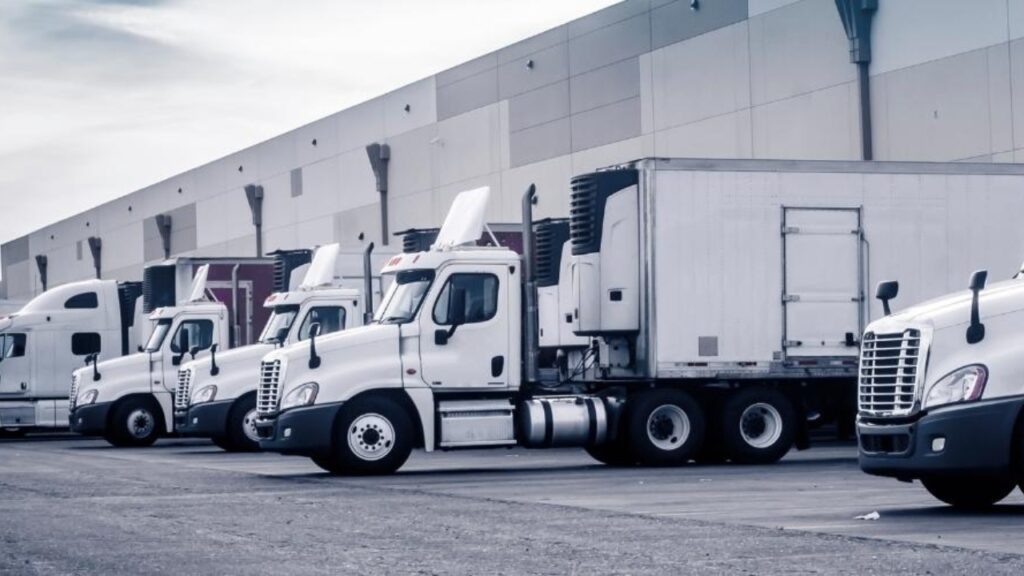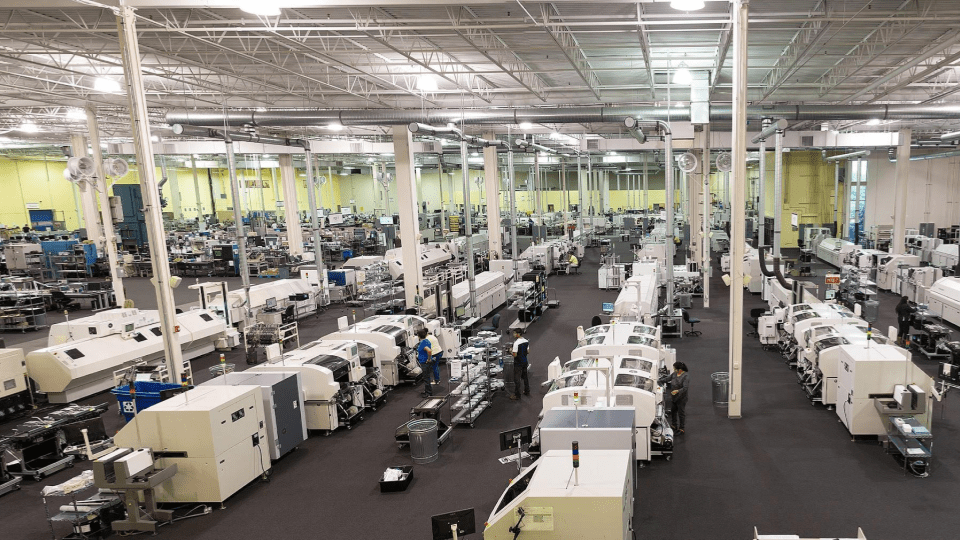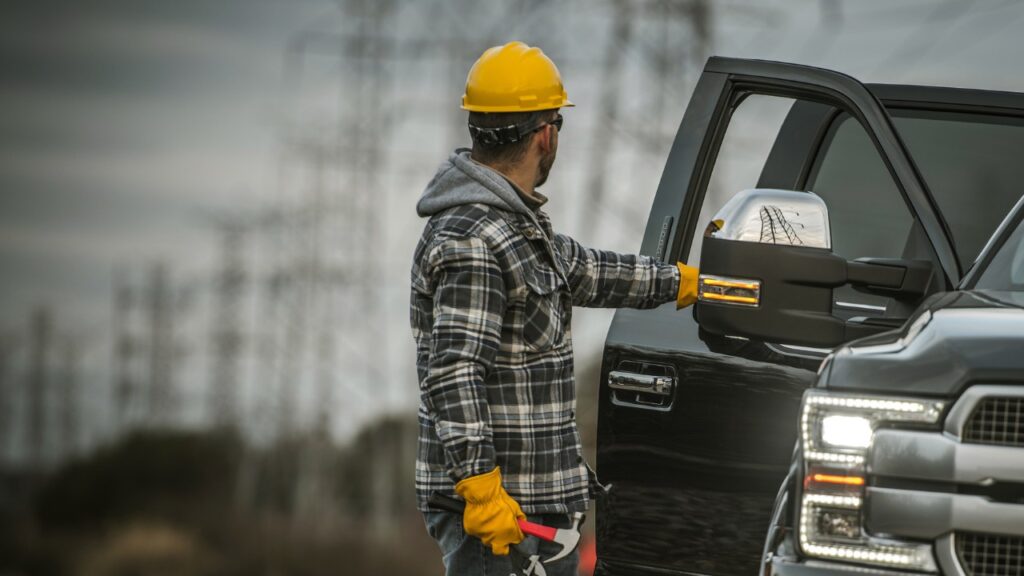Overview
Watch as Mike Moran describes the changes occurring in the IoT market. Starting with the shift away from a traditional back end, Mike explains the need for more powerful but low-power, cost-effective silicon closer to the edge.
We also learn how AI and machine learning are impacting the automotive industry through integration with cameras and smart sensors. According to Mike Moran, “It’s all about video right now…” in the automotive space.
Connectivity innovation also comes up as Mike and Ryne discuss new protocols, private LTE and 5G networks, and more intelligent sensors.
Through Ryan and Mike’s collaboration and story-sharing, we better understand how Morey is differentiating itself and disrupting the marketplace by realizing its vision.
Video Transcript
Ryne DeBoer Hi, I’m Ryne DeBoer and this is a Morey Moment.
And I’m here with Mike Moran, head of Technology, Engineering and our product future at Morey.
Mike Moran Hey, Ryne.
Ryne DeBoer Hey, man. So today I’d love to ask Mike a few questions.
Mike’s a visionary and really understands where things are headed.
Mike, over the course of your career, you’ve been exposed to pretty much the entire wave of telecom and the onslaught of the Internet.
And then obviously now the IoT really exploding. When you look at IoT, what excites you the most right now in the market?
Mike Moran Yeah, so I think it’s a really exciting time in the market with IoT.
Specifically because just in the last few years there’s been mega changes going on with both the technology and evolution of the market itself.
We’re seeing more and more intelligence getting pushed to the edge of networks out of necessity.
When you’re talking about trillions of devices, you can’t backhaul all that data and handle it. So more and more, you’re seeing more intelligent edges and a lot more consolidated functionality.
The other big trend we’re seeing is machine learning and AI being pushed closer to the edge.
When you talk about things like prognostics and predicting failures, safety issues and so on, machine learning is a huge piece of that.
Ryne DeBoer Yep.
From your position, what do you think is going to be impacted the most with all of this intelligence on getting to the edge or the AI / machine learning stuff, getting to the edge?
Mike Moran So a couple of things. One is the role of the traditional back end is going to change.
It’s going to become more lightweight to allow scale.
And you’re going to see more and more of that heavy lifting pushed out to the edge.
And the effect that’s going to have is it’s going to drive the need for more powerful but low power, cost effective silicon, closer to those edges.
So the old idea of a traditional IoT gateway was really a dumb device that collected information and forwarded it.
And now it’s going to be much more involved in the value chain.
Ryne DeBoer What are some of the applications that excites you the most?
Mike Moran I’m really excited about where AI is going as a technology.
I think that more and more high speed interfaces at the edge in vehicles, in IoT gateways and so on.
I think automation is a huge area that is ripe for innovation.
There are others, but those are a few that are key.
Ryne DeBoer What industries, from your perspective, are the most ripe for disruption at this point?
Mike Moran Well, I think there’s a lot of room in something that’s near and dear to us, which is in the automotive space.
There’s a lot of initiatives going on with smart trailer, platooning, a lot of things going on with over the road and heavy equipment. But I also see in mining, oil and gas in particular, industrial IoT a lot of room for advances.
It’s almost like when you look back at medical devices, they were these giant things that you’d strap on a patient, record with a tape and analog tape for hours to get like a heartbeat.
Now there’s a little teeny device that goes in somebody’s pocket and does the same thing.
There’s the same kind of room for innovation in these fields.
Ryne DeBoer What do you think about cameras or image sensors?
What what have been some of the applications that excite you the most?
Mike Moran Yeah. So pretty soon everything is going to be video. It’s all about video right now in the automotive, over the road and even in equipment space.
Cameras are critical for a number of reasons. But obviously, driver safety is one.
But probably one of the biggest ones is to avoid lawsuits and use forensics, you know, around accidents and events like that.
ELD, you know, the logging of driver hours behavior, etc.. So I’ll get back to AI..
More and more AI is making its way into these camera systems. Right now, one of the issues with it, though, is it’s kind of island AI is what I call it.
I mean, it’s stuck with the camera itself, and there’s not a lot of correlative AI that can look at hey, this is what’s going on in the vehicle itself:.
It’s at the speed; it’s got this much gas; and, this is happening with the driver and around the driver. So that’s the next big wave, I think that’s coming with cameras.
Ryne DeBoer So I think the the phrase that I’ve heard is multi sensor fusion.
Mike Moran Yeah.
Ryne DeBoer What do you from your perspective, what is the best way to accomplish multisensory fusion and provide value from it?
Mike Moran Yeah. So this in a way, ties back to what we were talking about a minute ago, which is more intelligence at the edges of the networks.
So to be able to do correlative multisensory fusion type, applications, you’ve got to have the horsepower at the edge to do that.
So you need higher end devices. Doesn’t necessarily mean more expensive because, you know, as Moore’s Law dictates, things get cheaper over time with more integration.
But bringing that capability of multiple feeds from sensors, cameras, vehicle data, whatever you want to add to that to a common point at the edge,.
Not having to backhaul it all to the cloud is really a big key because it won’t scale,you know, trying to backhaul all that data.
Ryne DeBoer So something we talk a lot about is the difference between microprocessor compute versus FPGA compute.
From your perspective, what’s the kind of the tradeoffs of both and from your perspective, which one has more of an advantage?
Mike Moran It really depends on the end application. They both have their place.
Micros are really good at obviously general purpose compute. You know, if you’re doing things that are well emulated in software, it’s a great fit.
FPGA bring more of a hybrid approach. All the modern FPGA have micro cores, usually in arm cores or something like that.
But then they also have kind of a sea of programable logic that lets you do application adaptation to the environment.
So for example, if I’m doing something in a smart factory and I want to do machine control, I can instantiate motor control cores or something else to control robotics and sync systems together.
FPGAs are really well-suited for that.
Ryne DeBoer Beyond those applications, we talk a lot about connectivity and there’s been a lot of changes in connectivity in the last few years.
What are some of the connectivity innovations that you’ve seen that you think will be either additive or disruptive to the total IoT stack?
Mike Moran Mm hmm. Well, I mean, there’s a number of things. So for one, a few years ago in IoTt, there was like a smorgasbord of what you call PAN or LAN protocols, right?
There is Laura. There’s, you know, Sigfox or Zigbee. There’s all these things competing.
And the reality is the market’s shifted down to really two primary personal area network wireless interfaces and that’s Bluetooth and Wi-Fi.
Yet for remote connectivity, cellular is, you know, by far the dominant technology there.
Within the cellular space we’re seeing a lot of evolution with 5G coming out, cheaper data plans.
And you know, what’s on the horizon very soon is private LTE, which lends itself really well to things like construction yards or even platooning, where you want to create a private, secure, high availability, even redundant network with the high bandwidth of cellular.
Ryne DeBoer So in this case, when you’re talking about that, you basically get, from what I understand, all the benefits of a traditional LTE cellular network.
But you you have the entire stack and you can use it any way you see fit.
Can you unpack that a little bit?
Mike Moran Yeah. So so when you’re talking about private LTE or even 5G, private spectrum, there’s a bunch of different solutions out there.
But the idea is that instead of a cell tower, you’ve got a small cell, which is a small device which can either be mounted to a pole in a construction yard, it can be mounted in a vehicle, which is how they’re using it for public safety today.
And what it does is it creates either a mobile or a stationary footprint for cellular communication with maybe up to a mile radius.
So it’s a limited footprint, but you can essentially run whatever data you want privately over that.
So it’s not going through a provider’s core or back end necessarily. You can get away from the data rates that are associated with that.
The only thing you really need is Internet connectivity back to that small cell, but you can have maintain mobility.
So for example, if you’re in a mining application with heavy equipment and you’ve got a bunch of vehicles that are going further and further down a mineshaft,.
You can have small cells periodically, every so often posted into that environment, and they’ll still seamlessly handoff as if they were going from tower to tower.
So it creates a lot of really flexible options.
Ryne DeBoer Now that’s very interesting. So I think that opens the door for a different part of the IoT sec,.
which is smart sensors.
So whether it be regular cell from a traditional carrier or small cell,.
what role do you see smart sensors having in the agency?
Mike Moran Yeah, so there’s definitely a big shift towards more intelligent sensors. Again, with integration comes new possibilities.
And, you know, instead of having a sensor, the old model is you’ve got a dumb sensor that speaks when protocol to a gateway.
And then a gateway package is had all been sends it back to the cloud.
Mike Moran More and more we’re seeing integrated LTE directly into these sensors and that’s becoming actually affordable with the integration that’s going on.
Ryne DeBoer Any applications that are more exciting to you in that area or not?
Mike Moran Yeah, I mean, it’s all interesting to me. I think the sensor integration is a really key thing to keep our eye on.
But I think more of where I’m excited is more in the Gateway Hub arena where, as we were talking about before,
you’ve got this rich data environment where you can really add value with AI, machine learning, analytics, prognosticators,there’s video bringing it all together and making that data combined have synergistic value.
Ryne DeBoer Any other technologies out there that are exciting that doesn’t even have to do with IoT?
What, I mean, I know you’re a student of all kinds of different kinds of technology.
What’s what’s gotten you fired up recently?
Mike Moran I really am probably mostly buried in the IoT stuff right now.
It’s been my main focus. But yeah, there’s some cool stuff with autonomy that’s going on.
Smart vehicles, electric vehicles that that’s really interesting.
Ryne DeBoer So when you were coming to Morey, I. I think you found us, really.
And I think what what really caused us to hit it off is I think we had similar and compelling visions for where things can can head in our space.
The smart connected solution space. For you, from a vision standpoint,
When you when you picture five or ten years into this into the future, what do you see as the compelling vision that has caused you to even bring on some of your best and brightest teammates from a variety of different spots in your career?
Mike Moran Yeah. So when I first started at Morey, I was excited when I started speaking to you about your vision, because I think that is very tightly related to how I view things the way you think.
And, you know, I’m ambitious. I want to be in this to win and not just, you know, go on and collect a paycheck.
So once I saw your vision, and then you and I started to collaborate, I felt there was a lot of really good synergy there.
And, you know, so for me, I think the sky’s the limit. In ten years, we could be, you know, name your price tag, but we could be, you know, ten, 100 X where we are right now.
I really believe that. And I think that’s what’s, you know, kept my interest and the interest that I’ve hopefully conveyed to the guys I brought on board.
I think that’s what excites them.
Ryne DeBoer In terms of your teammates and, things that would be inspiring for them to know that we’re working on or where things are headed.
If you were in their shoes, what would you say is the most exciting things going on here at Morey?
Mike Moran I think, you know, the most exciting thing is really our vision and the fact that we’re taking steps to realize that vision.
So I think we have the right ingredients. We have really smart people.
And we are capable of, you know, really differentiating ourselves in the marketplace.
People see that when it’s backed up by action. And I think the actions that, you know, you and Dana and others are taking reinforce that.
] So, you know, the more we pursue that, you know, big, lofty goal we have for ten years from now, people see that they’re excited.
Ryne DeBoer Awesome. Yeah, I agree. I think that some of the most fun early white board days that we had, we started to paint kind of a the matrix that is, you have smart sensors and connectivity.
Ryne DeBoer You have, uh, powered, sometimes powered and non powered assets.
And then you have basically unlimited ways to compute data or transmit data to a cloud.
And that sort of set of ingredients for a chef like yourself is pretty inspiring and interesting.
And so when we went about starting to build out our roadmap, I think that was some of the early strategy work that we collaborated on.
As you think about kind of where our roadmap has gone and where we’re headed now, as you think about that universe,
how did you go about kind of organizing the portfolio and our roadmap and where we’re trying to bring things?
Mike Moran Yeah. So I mean, we really, you know, took a divide and conquer approach. So there’s things that are tangible and that we can do in the next, let’s say, two years, you know.
So that was one thread of activity. And the other one is,”let’s reach for the sky and see,” – not limit ourselves artificially.
So we’ve got kind of that five year loftier view as well. So the two of them are kind of an overlay and the goal is to be able to migrate as we grow as a company.
Things off that, you know, big, hairy, audacious five year vision on to our tactical two year roadmap and start executing, more and more towards that goal.
Ryne DeBoer Mike, as we’ve been putting together our strategy, I think one of the keys and one of the tenets that’s a core belief for me that I know you share is best product wins,.
But more importantly, best user experience wins.
And as we focused on what we’re calling our next gen platform or NGX, I really think that the focus has been on, not only the user experience, but the underlying and enabling technology,
that becomes available to the stakeholders that really need to leverage a device and all of its power.
Talk to me about how you make decisions or how you create a platform that is intuitive, easy to use, delightful for those who are trying to make insights out of a data acquisition or a high power gateway.
Mike Moran Yeah. So that’s absolutely one of the key ingredients is usability.
And you know, for example, you mentioned the next gen platform, which is an initiative we’ve been working on here for a little while.
Out of the chute, the goal was to make this very user friendly, easy to deploy and upgradeable in the field, which is a really big key to that.
So, you know, the approach we’re taking is fully active remote diagnostics, always available management, meaning we can talk to the device wherever it is, whatever we would like to do for both troubleshooting and upgrades.
But really the configuration and ease of deployment piece of it’s coming down to a really unique architecture that we created for this product.
And without letting too much out about it, you know, it is capable of evolving to being a full application hub with multiple different applications running at the same time.
So it’s not just a purpose built device. It’s not just going to do telematics,.
It can do telematics. And then we can, you know, turn on an application for, you know, prognostic for health readiness.
We can turn on AI, we can turn on video analytics.
So it’s really a building block for us as we go forward to, not just differentiate, but disrupt the market.
So given your background, if you were a user or a customer that had that toolchain or that tool kit, what would excite you the most?
Well, a couple of things. So one would be that it’s it’s a standard architecture where it’s very easy to deploy, configure, turn up and monitor.
So operationally, it’s very easy to use. And the second thing is it uses standard software components.
So if I want to change what I’m doing and add value as a provider in the field, I can continue to create, I can have an ecosystem of third party developers,
and I can create value add applications that don’t have to reside on the back end. They can actually scale on the device itself.
So not only does it open up the door for future creativity, but it allows you to continue going and continue building as opposed to being stuck with something that’s been deployed.
Yeah. So if you go out and your value prop is “A” and then you know, you have some brilliant ideas and you say half a year down the road, hey, we’d really love to be able to do this.
You don’t have to rip that device out and put something new and you can actually reuse.
Ryne DeBoer That’s pretty cool.
Mike Moran Yeah. Some of the stuff that excites me the most is we’ve we’ve been at this for a different amount of time, but in general a lot of time.
Ryne DeBoer And I feel like we know where the market’s headed and no one’s really done it well enough yet to have consolidated the market are really pulled off the land grab.
And so I still feel like it’s a little bit of the wild wild west.
Mike Moran Yeah, I agree. And I think that’s really our opportunity. You know, we’re only constrained by our own beliefs. I think we can, you know, really be differentiated and disruptive in the marketplace.
Ryne DeBoer Well, thanks for spending some time and collaborating and sharing stories again.
This is a Morey Moment and we’ll see you next time.











